Where Is the Breaker Box in My House? (Location List)
Author: Omar Alonso | Editor: Omar Alonso
Review & Research: Jen Worst & Chris Miller
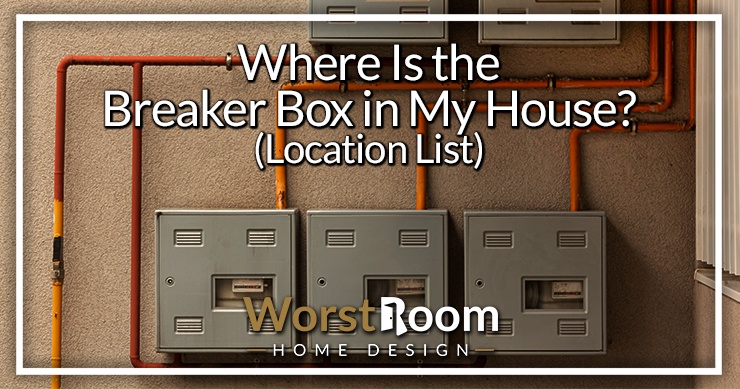
Moving into a new house is a thrilling experience until the power goes out and you think for the first time "where is the breaker box in my house?" Every homeowner experiences a trip in the electrical system from time to time. You might plug in an appliance that causes a short, or there might be a surge in electrical supply causing a trip.
To turn the power back on to your property, you'll need to locate the breaker box and reset the earth leakage. As a new homeowner, you probably wonder, "Where is my breaker box?" Most people don't think to look for it before something goes wrong, and if a trip happens at night, finding the box is a nuisance.
Knowing where to look can mean the difference between getting the power back on ASAP or stumbling aimlessly in the dark, searching for the breaker box. This guide unpacks the common areas around your property where you'll likely find the breaker box. With these tips, you'll have the lights on in no time.
Where Is the Breaker Box in My House?
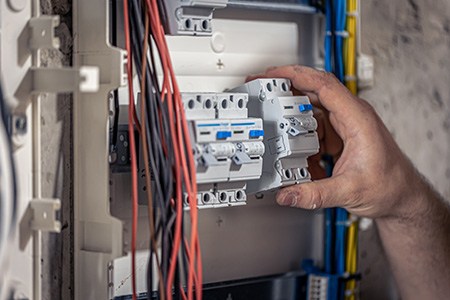
Where are circuit breakers located typically? The location of the breaker box in your home might not be the same as your neighbors or the last home you lived in. Depending on who built the house and its layout, the breaker box could be in one of several locations.
Bear in mind that according to the building code, the breaker box can't be installed in rooms where there isn't sufficient space for an electrician to work on it. So, you won't find it in crawlspaces or other hard-to-reach areas like closets. It's also against the code to install it in the bathroom – water and electricity don't mix.
The space in front of the breaker box must be clear and accessible. According to the building code, the box must have a clearance of 36" deep and 30". For these dimensions to make sense, the ceiling must be at least 78" from the floor, so you can rule out all under-stair crawlspaces and the like.
Specifications state that the breaker box must be as close as possible to the room's entrance. So, in most cases, it's going to be close to a door inside your home.
Tips for Finding the Breaker Box
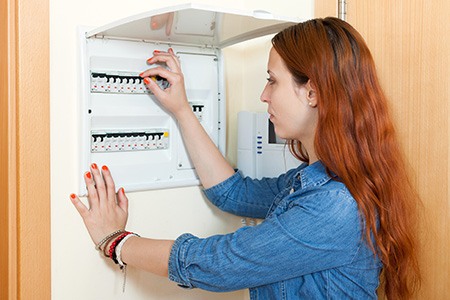
"Help, I can't find the breaker box in my house! Where is my fuse box?" Follow these tips and you’ll figure out where your circuit breakers are located in no time.
Search Inside Your Home
Start the search for the breaker box inside your home. Look around the entrances to rooms for a steel box. Most of the time, the breaker box has a covering to prevent accidental contact with the breakers and protect it from dust.
The basement or the garage is a good place to start the search but it can be tucked into any type of room just depending on what the electricians decided was best. These locations are safe spaces to install the breaker box, putting it out of sight of children and away from any area where people may contact it accidentally.
The hallway, utility rooms, or storage areas around the house are all suitable locations for the breaker box. If you're living in an apartment, the breaker box might be close to the front door or in a cupboard in the kitchen. Or it might be in the back of a walk-in closet, as long as there's sufficient space to access and work on it.
Search Outside Your Home
In most instances, the breaker box will be somewhere inside your home. However, in older buildings, you might find it somewhere outside. If you can't find the breaker box inside, you'll have to have a walk around outside your property to find it.
The most likely outdoor location of the breaker box is by the meter box. It's usually fairly easy to find; it's typically somewhere around the backside of the house. Or it could be out front in some instances. Look for a steel box standing out from the background.
If your neighbor has a similar house design to yours, it could mean the same construction company built both buildings. If that's the case, you can ask your neighbor where their breaker box is, and the chances are yours is in the same location. "Hey, neighbor, where is the breaker box in my house?" There are no stupid questions!
Is it a Circuit Breaker Box or a Fuse Box?
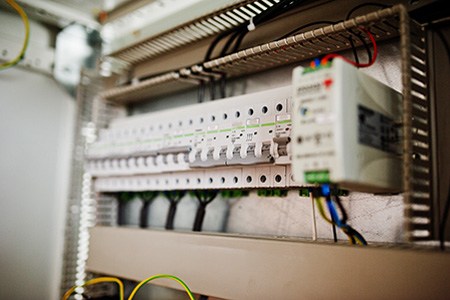
After you find the breaker box, you'll need to open it up to turn the power back on. The first thing to assess after finding it is to see if it's a fuse box or an electrical breaker box. If there's a row of switches, you have a breaker box. You have a fuse box if you see an array of round fuses screwed into sockets.
Older properties have fuse boxes; if you've blown a fuse, you'll need a replacement to turn the power back on. If you have an older home or large property, there might be multiple breaker boxes or fuse boxes.
If you have a breaker box, use the following guide to reset the breakers and restore power to your property.
Resetting the Breaker – A Step-by-Step Guide
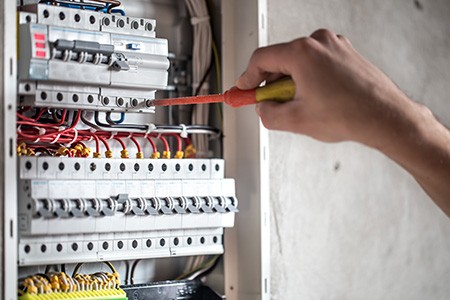
If you plugged in an appliance and the power suddenly went out, remove the plug from the outlet, as it's likely causing a short and responsible for the problem. Don't plug it in again after turning the power back on.
1) Find the Tripped Breaker
When opening the breaker box, you'll find that one switch is in the off position while the others are all on. Some breakers feature visible orange markings if the breaker switch is off. Some homes may also have an earth leakage switch at the end of the breakers; this switch might also be in the off position.
2) Reset the Breaker
Flip the breaker switch back to the on position. If you have an earth leakage switch, push it to the bottom completely before turning it back on. This action resets the system. The power should come back on immediately.
3) Test the Circuit
If you flip the breaker or earth leakage breaker back to the on position and the power trips again, you'll likely see the same breaker flip back to the off position. That means there's something plugged into that circuit causing a short.
Some breaker boxes have small notes above them indicating if they're breakers for plugs or lights. Review the note if it's available. Understand how breaker boxes work in general too. It might tell you the outlet or light and the room it delivers power to. If unsure, return to the house and unplug all working appliances. Go back to the breaker box and reset it.
4) What Do You Do If the Breakers Keep Tripping?
Sometimes your circuit breaker won’t reset or keeps tripping. If the power stays on, return to your home and plug everything back in. When you plug in something that causes a trip, you've found the appliance or light responsible for the problem. Remove the plug and plug it into a different outlet in another room.
If the appliance works without tripping the power, the outlet is responsible for the problem. If the appliance trips the power when plugging it back in in a different outlet, it's the appliance, not the outlet. If it's the outlet, you'll have to call an electrician to replace the breaker and test the system.
FAQ’s When You Can’t Find the Breaker Box
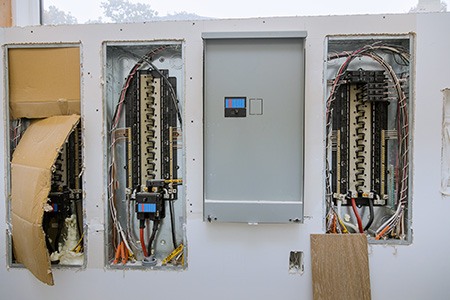
Where is my circuit breaker? I know when I couldn’t find the breaker box in my house for the first time (or rather my first apartment, having no clue what a breaker box was), I ended up with a lot of other questions. Let’s cover the common ones now.
Does My Home Have a Breaker Box?
Yes. All homes have a breaker box or a fuse box. It's an important safety feature for the electrical system. For instance, if you plug in a faulty appliance, it usually trips the earth leakage by creating a short circuit. If the system didn't have a breaker, it would keep feeding electricity to the faulty appliance, resulting in an electrical fire that burns down the house. Follow our guide and look around for the breaker box inside your home. If you can't find it, check outdoors.
Where Is My Breaker Box?
The breaker box is usually embedded into a wall and has a door that opens to reveal the breakers. The most common locations for the breaker box are behind doors, in the basement, in the garage, or inside walk-in closets. When you find the breaker box, open the door, and you'll see a row of switches.
How Many Breaker Panels Are There in a House?
Most homes only have a single breaker box. However, some have two or three, depending on the property size. Some homes might have independent circuits for the garage, the home, or a pool house. Typically, there's one main panel and other sub-panels in multiple installations. If the power trips to the main panel, it affects electricity delivery to the sub-panels.
Key Takeaways Regarding Breaker Box Locations in a House
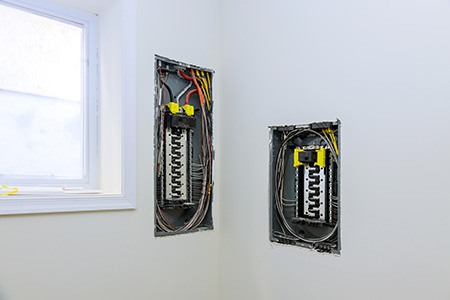
Let’s recap the main points in the summary list below:
- The breaker box houses the breakers responsible for delivering power to your home's lights and electrical outlets.
- The breaker box can be inside or outside the home. It's more common to find it inside in newer homes, but older properties might have the breaker box outdoors.
- The best indoor locations for breaker boxes are behind doors, in the basement, or in the back of walk-in cupboards or pantries.
- The breaker box is embedded into the wall, and you'll open the steel panel on the front of the breaker box to reveal the breakers.
- Locate the breaker in the off position, flip it to the on position, and reset the earth leakage switch if there’s one at the end of the row of breakers.
So, Where Is the Breaker Box in My House?
Your best bets are either in the basement (maybe in a closet or on a main wall) or within the garage on the wall. After that, you may look inside closets. Sometimes they’re along the wall in a hallway but you’d have noticed that by now. In rare cases they can be situated on the exterior of the home but this is rare unless it’s a covered area that is undoubtedly protected from moisture and rain.
So where is the breaker box in my house? In mine it’s in the garage. In my brother’s house it’s in the basement and it's a fuse box. In my sister’s house it’s in the laundry room. So just keep looking and you'll find yours.



